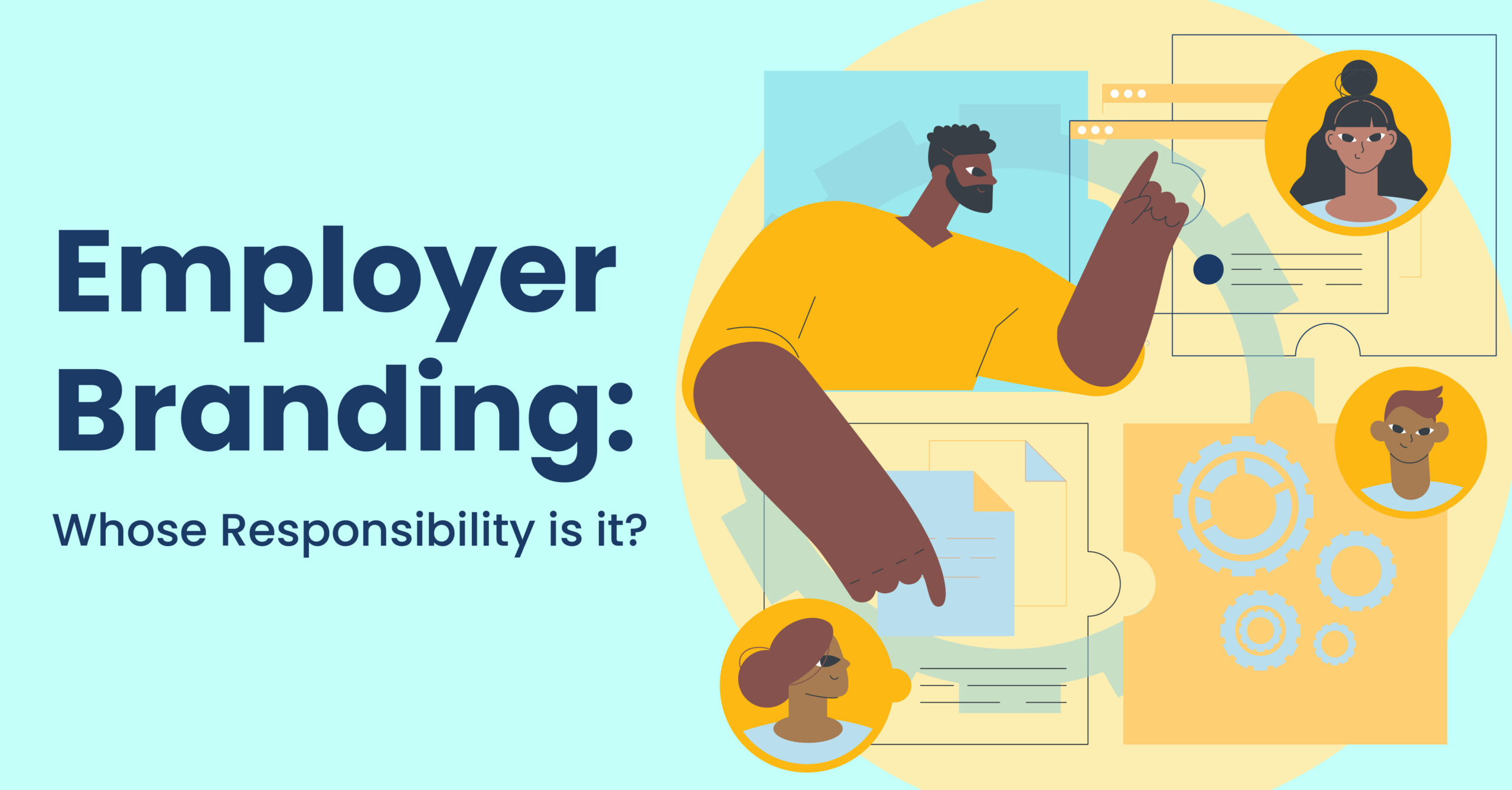Employer Brand is your company’s unique identity and reputation as an employer. Like it or not, your organization already has an employer brand in the talent space. People are inevitably going to talk about your brand and shape an opinion. So, it makes sense to position your brand with the one you want in the war for talent.
As shocking as it sounds for new-gen employees, employer branding was not always a central topic of discussion. At the beginning of the millennium, consumer Branding took center stage as companies looked to build their unique identity to gain a customer base. However, with rapid digitization in the last decade and the pandemic forcing companies to adopt remote work, a seismic change was inevitable.
The value of a company is now increasingly weighted towards intangible assets of reputation, culture and its people. Prospective employees check out their employer’s profile before taking a call on whether or not to join a brand. Therefore, with remote and hybrid work models becoming the new norm, it is time to leverage a digital makeover of your employee experience. Let’s face it; you cannot provide an A-1 employee experience by simply sitting back and doing nothing. Now is the time more than ever to build an employer brand that seamlessly connects all your employees through digital channels and recognizes and rewards them for their contributions.
But the question remains, who exactly is responsible for employer branding?
Is it your company’s HR, CEO, Marketing or none?
Let’s find out!
Employer Branding is tying up loose ends, Together
HR is often positioned as the ‘face’ of the employer branding initiative. From attracting the best talents to maintaining company culture, HR keeps your employees engaged and motivated. Right from listening to the employee grievances and frustrations to charting out unique individualized solutions. Therefore, it would not be wrong to say that HR is a catalyst to Employer Branding.
Although higher employee engagement rates are crucial for employer branding success, essential tenets of visible thought leadership are not accessible through HR communication.
So, how is leadership made accessible to each employee?
The answer lies in upper management, more specifically in CEOs. HR might be considered the ‘face’ of employer branding, but the CEO is the ‘face’ of your company. When the CEO speaks, everybody listens. So, leaders need to use that platform to amplify company values to each person in the talent pool. For example, 50% of employees say they wouldn’t work for a brand with a negative reputation even with a pay increase. CEOs must establish an ’employee-first approach and become involved in talent acquisition conversations. There should be focus on enhancing employee experiences from day one, keeping employees informed and being part of initiatives in creating one voice inside out.
Providing the best value
Each employee has a defined set of expectations when joining your brand. Their list of expectations can range from monetary perks, flexibility in working hours, higher rate of engagement, learning opportunities, and more. Unfortunately, 55% of job seekers immediately abandon the application process after reading a negative review online. Therefore, along with maintaining a positive employee engagement rate, establishing seamless communication channels should be on the top of your brand’s to-do list.
Companies need to realize that employer branding is not just a marketing strategy but a lifestyle. Let’s not forget that employer branding is a constantly evolving field, with market trends and individual aspirations coming into play. Ensuring your employee’s well-being is vital for fostering a culture of inclusivity. Only through an inclusive approach would you create ambassadors who will amplify your brand voice and connect with future talents.
Laying out EVP’s unique to your brand isn’t enough; your employees need to live and experience those values. The role of HR becomes crucial here as they would need to keep track of their employee experiences constantly. If your company is well on its way with positive employer branding, amplify your values further; if not, do a much-needed audit. Building a brand voice inside should not be a headache. We-Storytellers’ premium offering on Employer Branding helps you enhance your employee experience with our proven frameworks.
Leading By Example: Beyond Hierarchical Boundaries
In the age of social media, no one is a bigger advocate for your brand than a satisfied employee. Creating consistent engagement throughout your organization’s channel is not an easy task. However, 82% of customers trust a company when senior leaders are active on social media. Leadership needs to become transparent, actively taking part in conversations providing a clearer picture of the company’s values. The CEO of your brand becomes a key player in nudging employees towards the bigger picture. Leading your organization towards the greater goal is vital in establishing a workplace filled with passionate and engaged employees. Gaining visibility and building connections beyond organizational silos is a sign of a quality leader.
Conclusion: Employer Branding is a Team Effort
Various elements constitute a successful employer brand, which means it isn’t the responsibility of one function. Teamwork becomes vital, and companies need to realize that pinning the employer branding responsibility on any particular department would only find themselves on weak footing. It is time to overcome the digital roadblock, nurture meaningful relationships, and work together towards a shared vision.
Are you looking to build a formidable employer brand that goes beyond monetary perks? Connect with us and discover how you can build one brand voice inside out.


